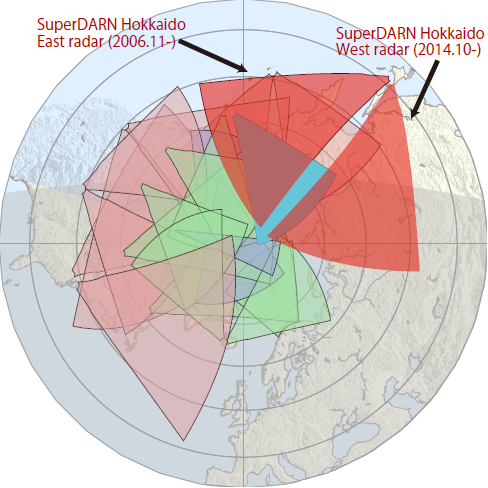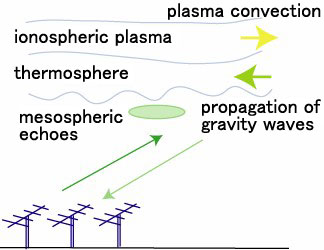Introduction to SuperDARN Hokkaido HF Radar
What is SuperDARN?
SuperDARN (Super Dual Auroral Radar Network) is an international collaboration project by eleven countries in the world. SuperDARN consists of twenty-one sites in the northern hemisphere and eleven sites in the southern hemisphere, covering over the northern and southern high- and mid-latitude regions. In common mode, SuperDARN observes ionospheric plasma convection of the high- and mid-latitude regions with time resolution of 1-2 min. Recently, as shown in the figure below, SuperDARN is used not only for the ionospheric research but also for the thermospheric and mesospheric research. |
 |
 |
SuperDARN Hokkaido Radar
Most SuperDARN radars have observed the polar regions higher than 60 geomagnetic latitude for more than a decade. The mid-latitude SuperDARN radars began operation recently (since 2005), and new discoveries are highly expected using newly constructed SuperDARN radars by some countries in the world such as Japan, USA and UK. Hokkaido radar is constructed by the Solar-Terrestrial Environment Laboratory, Nagoya University, Japan, and is located in the lowest latitude of the newly constructed radars. Hokkaido radar has great advantages for the coordinated observations with many other scientific instruments developed by many Japanese institutes.


